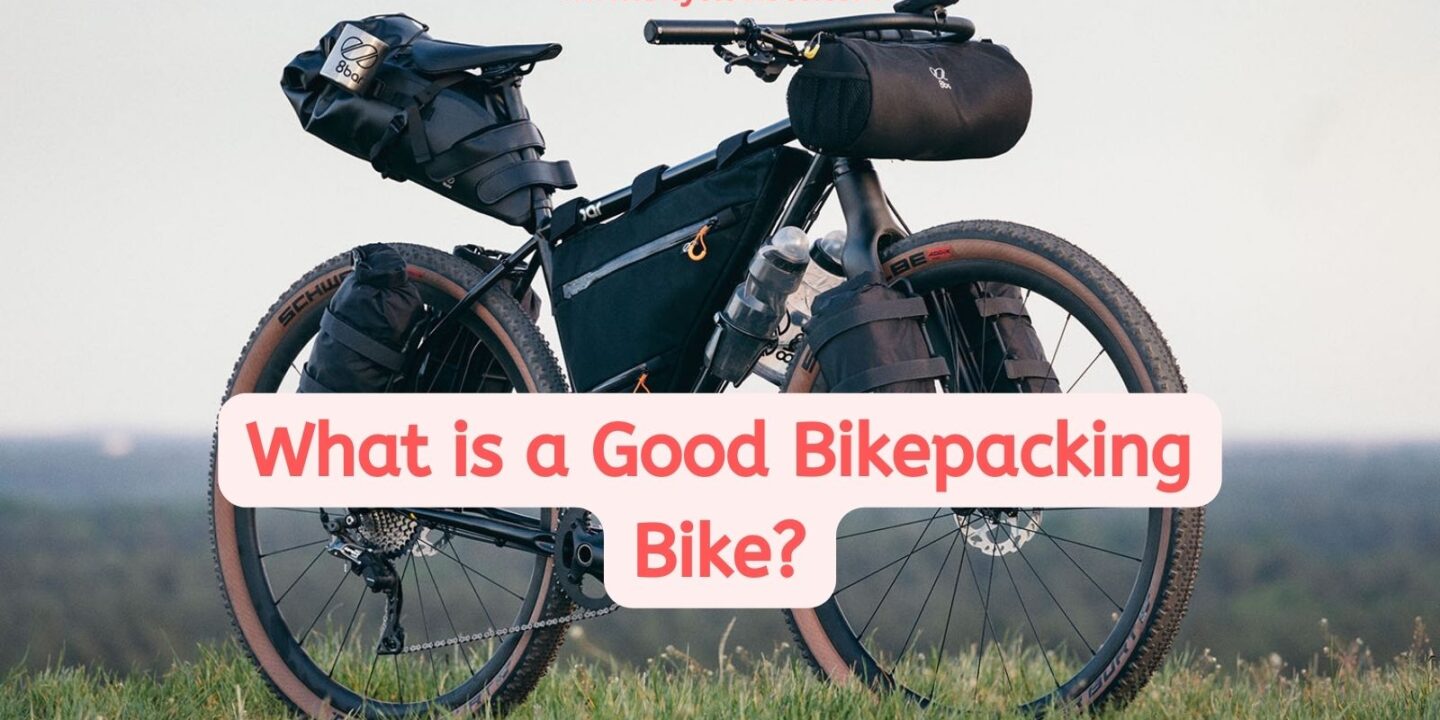
There are numerous bike categories these days, such as gravel, mountain, cross, and hybrid bikes, which can be overwhelming. In reality, bikepacking bikes for multi-day trips are as diverse as the riders who ride them, varying from sleek and lightweight to more cross or mountain bike-inspired designs.
So, which bike to use for bikepacking?
Is there a single answer to the question of what bike to use for bikepacking? In theory, you can use any bike for this purpose. You can start with the one you have and customize your first adventure to suit it. For instance, if you own a road bike, you can add a small handlebar bag, pack light, and ride on roads with low traffic. If you own a full suspension mountain bike, you can opt for a rear rack and backpack and explore the wilderness!
However, certain specifications can make your trip more comfortable and enjoyable, depending on the type of journey you’re planning. It’s like using a sports car for off-roading or running a marathon in high heels. It’s possible, but it won’t provide the best experience during or after the trip.
Therefore, it’s worth considering the terrain and distance of your trip when choosing a bike. A touring bike with sturdy tires and a comfortable saddle is ideal for long-distance travel. A fat bike with wide tires is perfect for off-road and winter adventures. A gravel bike is an excellent choice for mixed terrain with a balance of comfort and speed.
Table of Contents
- The complete guide to choose your bikepacking bike
- What is a bikepacking bike?
- The characteristics of a bikepacking bike
- The weight of a bikepacking bike
- Geometry of a bikepacking bike compared to a touring bike
- Other features to consider when choosing a bike for bikepacking
- Adaptation to long distances
- The versatility of the bike
- The components
The complete guide to choose your bikepacking bike
When it comes to deciding on the best bike for your bikepacking adventure, the answer is not straightforward. It’s a personal choice, and the journey plays a significant role.
Your ideal bike for bikepacking might not be the same as someone else’s, as it depends on two key factors: where you’re going and the load you’re carrying.
If your journey involves several days of off-road cycling, it’s crucial to travel light and have a bike that can handle the terrain. A heavy touring bike may be challenging to navigate, while a lightweight road bike may not cope well with mud and bumps.
Bikepacking is generally different from touring because of the off-road element. You’ll be cycling on single-track trails and in wilderness areas rather than on smooth gravel or asphalt.
What is a bikepacking bike?
Bikepacking is a great way to explore the outdoors, and the best part is that almost any bike can be used for it. You don’t need to have a fancy bike to embark on a bikepacking adventure.
That being said, there are certain features and choices that can make your bike better suited for multi-day bikepacking. It’s essential to consider these factors before heading out on your journey.
To begin with, the geometry of the bike is crucial. A relaxed geometry is better for long hours on the saddle and ensures that you’re comfortable. Additionally, the bike’s tire selection should be chosen carefully, with wider tires offering better stability and grip on unpaved roads.
Moreover, component selection plays a vital role in making your bikepacking trip a success. Having a sturdy and durable drivetrain will make the ride smoother, and good-quality brakes will ensure better control over the bike.
The characteristics of a bikepacking bike
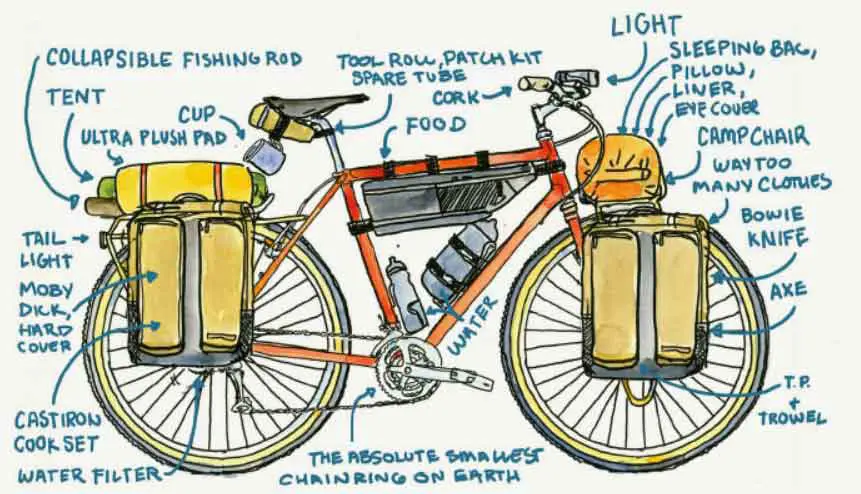
Bikepacking trips are typically shorter and lighter compared to bike touring adventures. As a result, the weight you’ll be carrying will be considerably less, and it will be distributed differently on the bike. With bikepacking, you don’t need racks because your cargo can be packed into 3-5 smaller panniers attached to the frame.
Moreover, bikepacking bikes are designed to be straightforward and easy to fix, which is ideal if you find yourself stranded somewhere remote. This simplicity also means that you don’t need a lot of tools to maintain your bike during your trip.
When it comes to frame rigidity, a heavier load will require a sturdier frame. However, bikepacking bikes can have lighter frames than touring bikes since the latter needs thicker tubes to handle the torsional forces between the front and rear loads.
The weight of a bikepacking bike
Bikepacking bikes and touring bikes differ in several ways, including weight, materials, frame, and suspension.
These bikes are lighter, weighing between 10 and 14 kg, while touring bikes are heavier, weighing over 14 kg. Bikepacking bikes are typically made of steel, titanium, or aluminum, unlike touring bikes that can use carbon fiber.
Bikepacking bikes have a slightly softer frame because they’re not designed to carry large loads. In contrast, touring bikes are built for off-road riding and can be rigid or hardtail. They have built-in suspension, making them suitable for riding on rough terrain.
In contrast, bikepacking bikes have shorter chainstays, like mountain bikes, because they don’t need to clear the heel of the rear panniers and want to ride more dynamically. They also may not have racks and fenders, unlike touring bikes, which always have them. Additionally, touring bikes have attachments for multiple inner tube panniers.
Geometry of a bikepacking bike compared to a touring bike
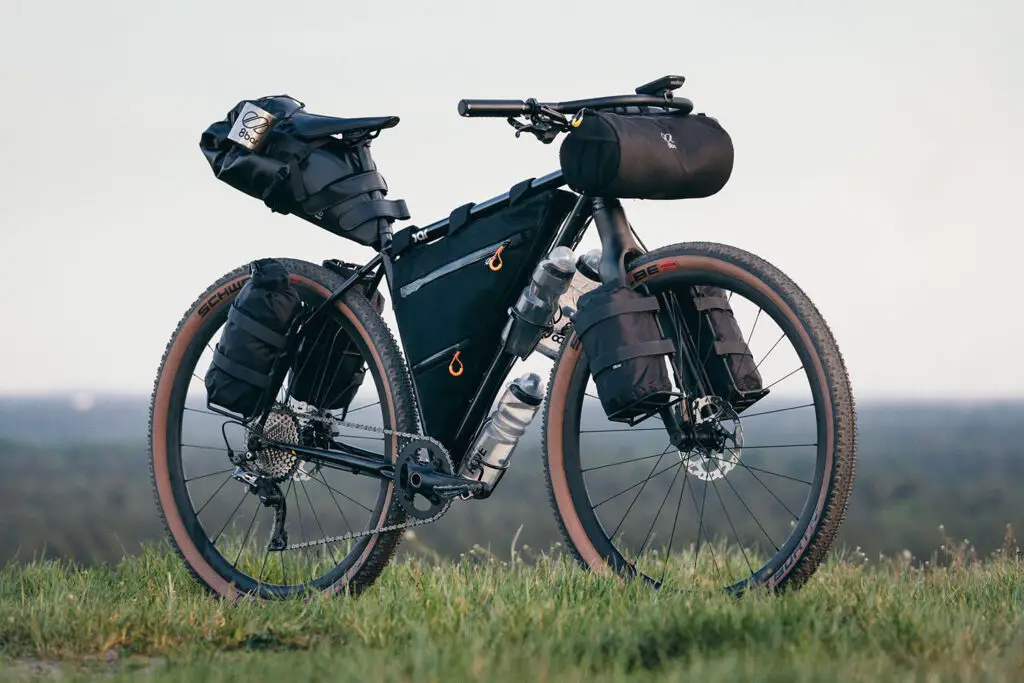
When it comes to bikepacking, the bike you choose can make a significant difference in your experience. One essential feature of a bikepacking bike is a longer chainstay. This helps to centralize the center of gravity, given the added weight of the gear, and prevent your heels from hitting the panniers. However, for bikepackers who don’t carry as much gear, shorter and sharper chainstays are an option for more thrilling rides.
Another key feature of a bikepacking bike is a shorter wheelbase. This allows for more adventurous riding as a backpacking bike requires less stability. Additionally, for both bikepacking and backpacking, a more relaxed and enduring posture is desired, so a similar stacking and reach is needed. While a racier geometry can be used for shorter and faster bikepacking adventures, it may sacrifice control on longer rides and off-road terrain.
A 1x drivetrain is also preferred for off-road bikepacking adventures. These drivetrains offer more ground clearance and greater gear jumps than derailleurs, and you won’t need to fine-tune gears as much off-road as you would on the road. You can also use higher climbing gears because your weight is generally less than a touring bike.
Wider tires have become increasingly popular in the bikepacking world, thanks to their ability to absorb bumps. However, they also add weight and can slow you down, so it’s essential to choose them wisely. For most bike adventures, a 2-3 inch mountain bike tire is sufficient. The heavier the load, the bigger the tire needed.
The beauty of bikepacking is that you can use any bike you have to get started. Just plan your routes accordingly. However, if you’re looking to invest in bikepacking, we hope this article helps you know what features to look for in a bikepacking bike.
Other features to consider when choosing a bike for bikepacking
Bike travel is a diverse and individualized activity that varies from person to person and bike to bike. Some may only have time for a few short trips per year, while others embark on multi-week journeys across entire continents.
As such, the list of requirements for a backpacking bike is extensive. Therefore, we sought after the Holy Grail of backpacking bikes – the one that could meet every need. However, the vast array of potentially suitable bikes available can be both a blessing and a curse.
On the one hand, the variety of options means that everyone should be able to find the perfect bike for their specific needs. On the other hand, it can be challenging to distinguish one option from another and select the right one from the many categories available.
Adaptation to long distances
When evaluating a touring bike, the ability to travel long distances is a significant factor. These bikes are often used for multiple days or even weeks at a time, so the number of hours spent in the saddle is more important than the number of miles ridden. Comfort is crucial in determining whether you can ride without pain for days on end or if you’re left struggling on the first night.
Although the contact points have the most immediate effect on comfort, the frame, wheels, tires, and seatpost also play important roles. We didn’t include the saddle in our evaluations as comfort is highly subjective to the rider’s preferences. A backpacking bike should have a balanced geometry that provides good handling and stability without being bulky.
Apart from handling, comfort, grip, and tire rolling resistance are essential factors to consider when evaluating a bike’s suitability for long-distance rides. Efficiency, speed, and acceleration also play a crucial role in this regard. How easy is it to pick up speed, and how well does the bike maintain its momentum? Is it efficient enough to maintain speed with moderate effort? As you can see, assessing the suitability of a bike for long distances is a complex equation.
The ideal bike for long-distance rides and extended hours in the saddle should offer the perfect balance of smoothness and damping, with natural and composed handling, while effectively converting your pedal strokes into propulsion. In conclusion, evaluating a touring bike’s suitability for long-distance rides requires considering multiple factors, and choosing the right one can make all the difference in the world.
The versatility of the bike
When it comes to bike categories, some are designed for specific scenarios, such as time trial bikes or aerodynamic bikes. However, a bikepacking bike needs to be much more versatile. It must perform well in different terrains, including dusty gravel roads, steep climbs and descents in the Alps, or long winding asphalt roads.
To determine the best bikepacking bike, we thoroughly tested each bike and evaluated its capabilities. Our focus was on versatility, asking ourselves if the bike could be used for daily commuting or day trips without luggage, in addition to backpacking adventures.
The components
Our understanding of technology revolves around two crucial elements: the right components and distinct features of the frame and fork. When designing a bikepacking bike, it’s essential to consider the gear ratios of the transmission for optimal performance on flat terrains as well as rough and steep gravel roads.
To ensure maximum control, especially on long downhill rides with extra luggage, the bike must have larger brake rotors. Additionally, vibration damping, frame geometry, ergonomic handlebars, and a good seat post are essential for comfort and sufficient compliance. The ideal bikepacking tire should offer good grip in all weathers and on all surfaces, low rolling resistance, and adequate puncture protection. It’s noteworthy that we didn’t experience any punctures during the entire test.
Apart from the frame, the fork should have adequate attachment points for saddlebags, bottle cages, luggage racks, and mudguards if necessary. Extra handles that you can grip the frame can also come in handy while carrying your bike, which may be unavoidable even on a well-planned route. Neat cable routing not only adds to the bike’s aesthetics but also makes it easier to attach the handlebars and a frame bag.
The bike should have generous clearance to accommodate wide tires, preferably 700 x 45C or larger, that offer plenty of grip and comfort. The best bike in the test should not only be well-equipped, but also have ample mounting points and clever details on the frame.
You may like also: Bikepacking With Your Kids


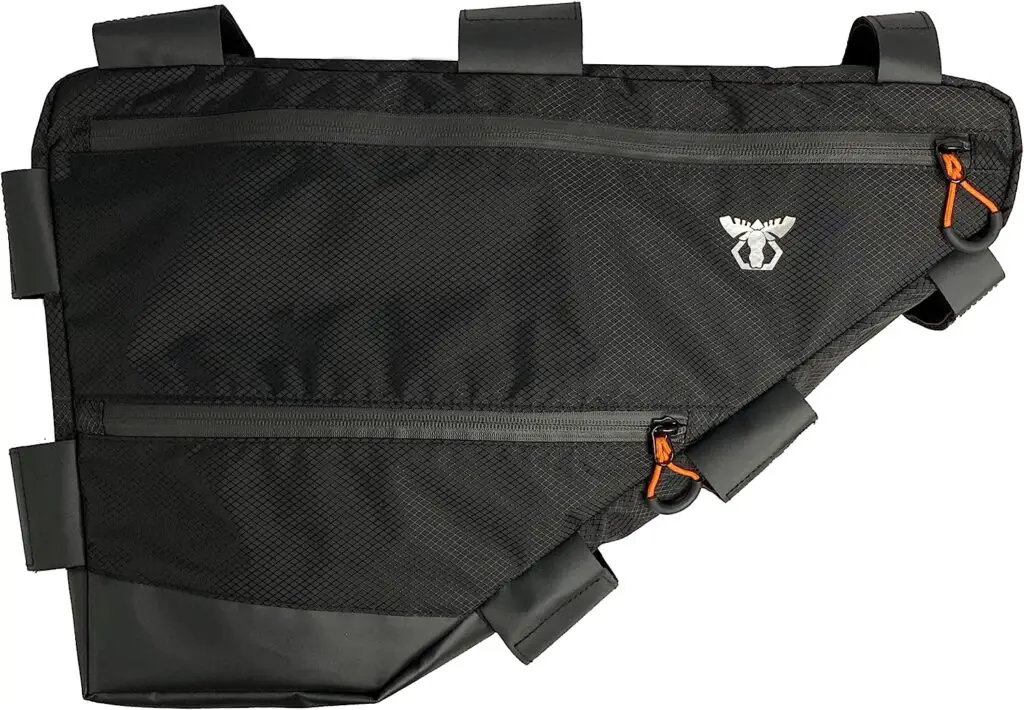
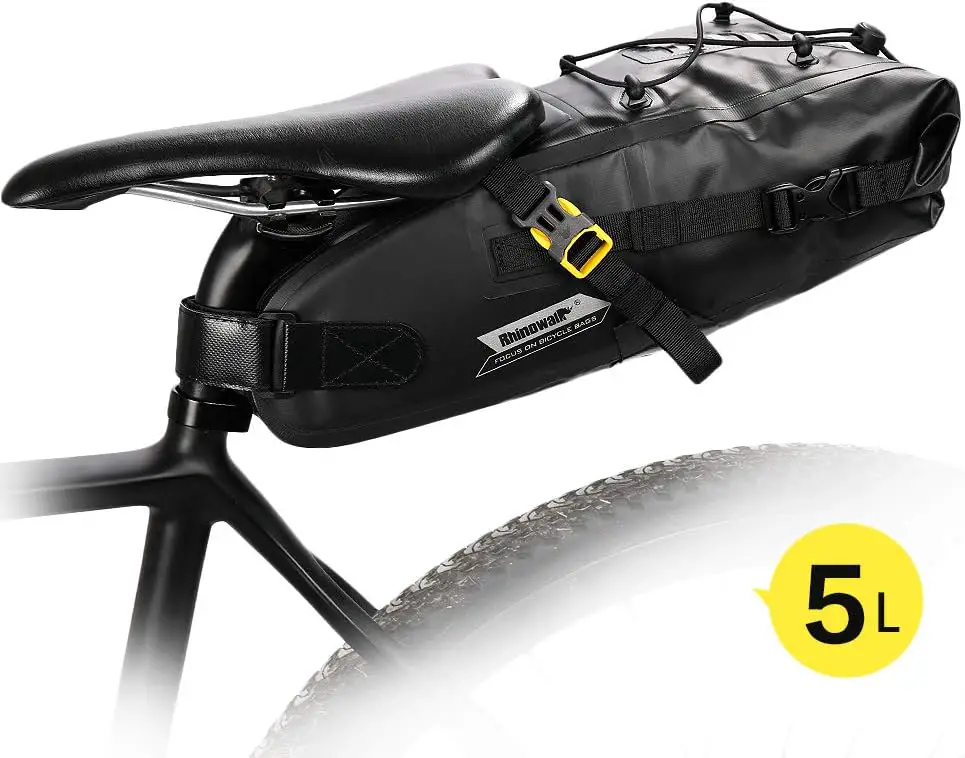

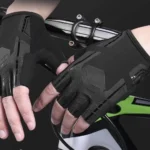

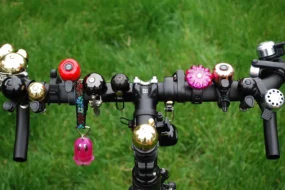
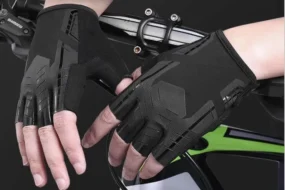

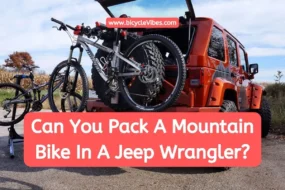
One reply on “What is a Good Bikepacking Bike?”
[…] You might like also: What is a Good Bikepacking Bike? […]